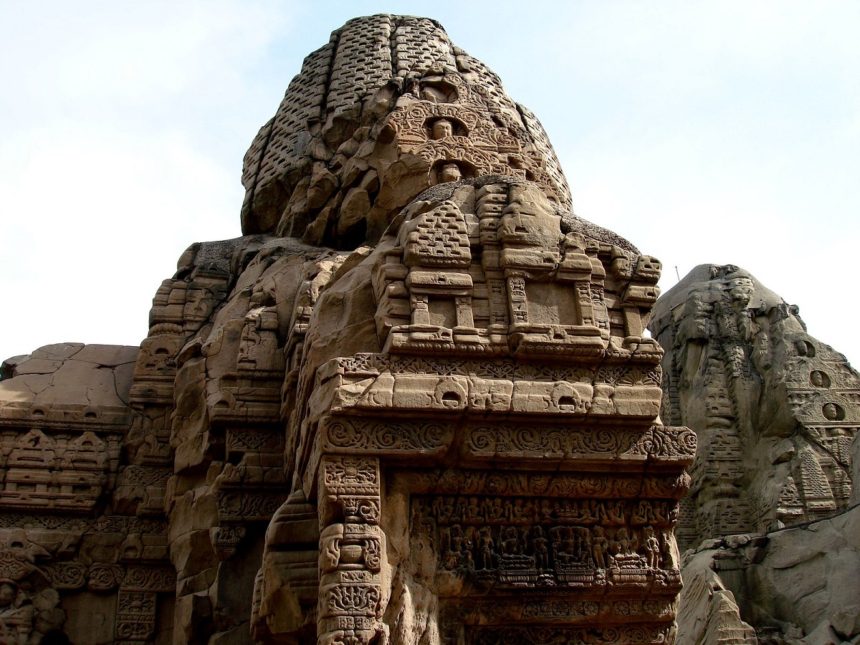Rock-cut Architecture is a testimony of human persistence in constructing magnificent structures by sculpting and cutting entire hills. Rock-cut temples in India present a different perspective on the building prowess of the past generations. The earliest rock-cut architecture exists in the form of caves carved out of hills.
Barabar caves located in modern Bihar dates back to 3rd century BCE are considered as the earliest example of rock-cut architecture in India. These caves with arched opening and two chambers are associated with Buddhism during Ashoka reign. The scale of the rock-cut architecture increases many times with Ajanta-Ellora caves sculpted during 5th-7th century CE. Other significant examples are Badami caves and Elephanta caves dating to 5th-8th century CE.
The first significant example of rock-cut monolithic temple complex (which is not a cave) is located in Mahabalipuram (Tamil Nadu). Attributed to the King Mahendravarman-I in late 7th century CE, the complex comprise of five chariot form structures carved from single monolithic granite rock. However, in North India rock-cut architecture is not commonly found.
North Indian temples are based on the Nagara style. The Nagara style is distinct from the Cave temples and Dravidian style with respect to the spatial layout, form and construction. The Nagara temples are mostly masonry construction in bricks or stone. Masrur temples present an exception to the monolithic rock-cut temple architecture.
Located on the hilltop at a height of about 2,500 ft from the sea level, Masrur temples are the only example of monolithic rock-cut temples in the sub-Himalayan region. More significantly, they are the only example of Nagara style temple built as the rock-cut construction. Since Nagara style of temples are mostly built as masonry construction while rock-cut temples are mostly cave temples, Masrur temples are a unique permutation of form and construction method.
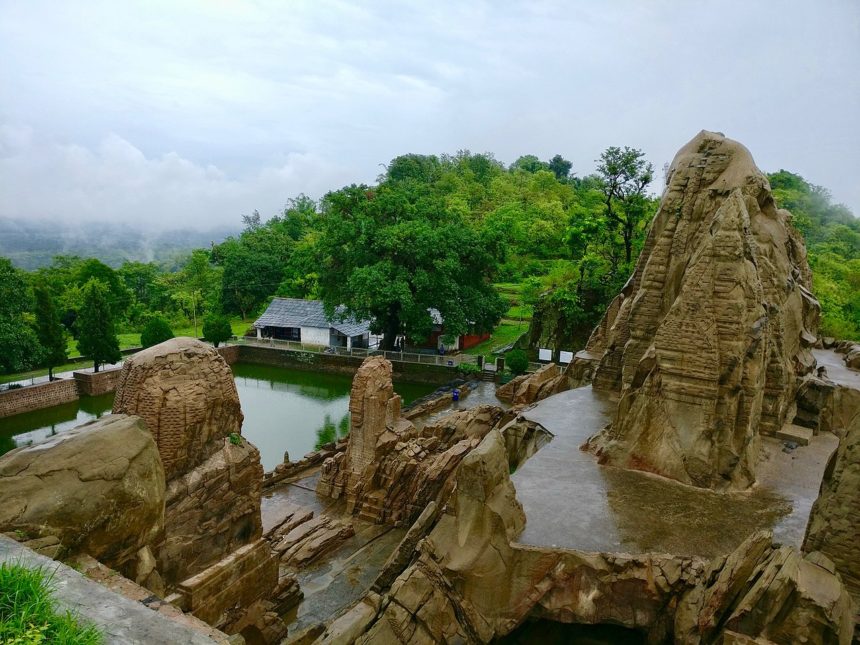
(Manish Pathak / CC BY-SA)
History of Masrur Temples
Masrur temple is a riddle for historians and archaeologists as its date of construction cannot be established from any credible source. There is no inscriptional mention of the patronage or period of the construction on the temple itself. Also, it has not been found in any historical account as to when this temple was constructed. As per local legend the temple was constructed by Pandavas of Mahabharata during their exile.
The imposing scale of the Masrur temples doesn’t leave any doubt that the construction was enjoying the patronage of some imperial ruler. The scholars in history attribute this temple to some unknown rulers of ancient Jalandhara kingdom of 6–8th centuries in the plains of modern Punjab. Although the Nagara style was certainly brought to hills from plains, still the association with the Jalandhara kingdom is deficient of credible information.
Another intriguing aspect of Masrur temple is its striking similarity with the temple of Angkor Wat in Cambodia. Angkor Wat is built in 12th century CE, much later than the assumed date of Masrur temples. Although, it is much larger in scale and evolved in its plan layout, the similarity in the forms of the two temple structure is prominent. It is a matter of further historical research to determine any regional interdependencies or cultural exchange as a catalyst in the construction of both the temple complexes.
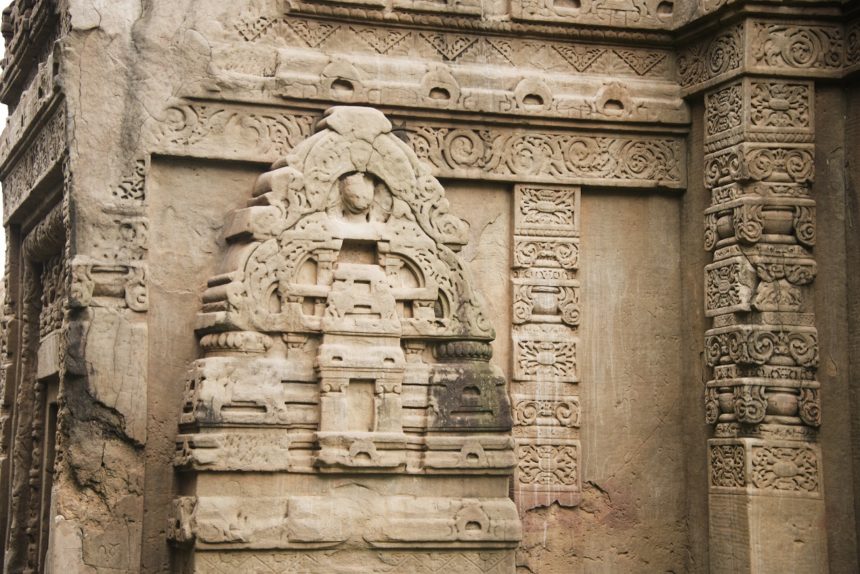
(Image: Imagist Poet)
Architecture & site Planning
Popularly known as the Himalayan Pyramid, Masrur is a cluster of 15 rocks temples carved out of a single rock and built around a central shrine. In other words, the 14 surrounding shrines were cut from the outside but the central shrine was cut from the inside – they really are a marvel of construction. In front of these temples is a rectangular pond which remains water-filled all through the year and reflects a magnificent image of these temples.
The temple complex is located on the highest point of a local hill signifying its erstwhile importance. The temples complex appears to be part of a settlement as evident from the caves and ruins of other structures on the south eastern slopes of the hill suggesting a settlement around the temple.
The central shrine houses idols of Lord Rama, Lord Lakshmana and Goddess Sita, all facing east. There is also a figure of Lord Shiva over the doorway to the main altar at Masrur. Cut deep into the rock, the depiction of the coronation of Shiva upon the lintel was one of the best-preserved of the temple’s ravaged carvings. It was a delight to behold; Shiva’s posture here was with his eyes closed, sat very much like the Buddha is known to sit. The presence of this figure has led scholars and archaeologists to believe that the temple was originally dedicated to Lord Shiva, but was later converted to worship Lord Rama.
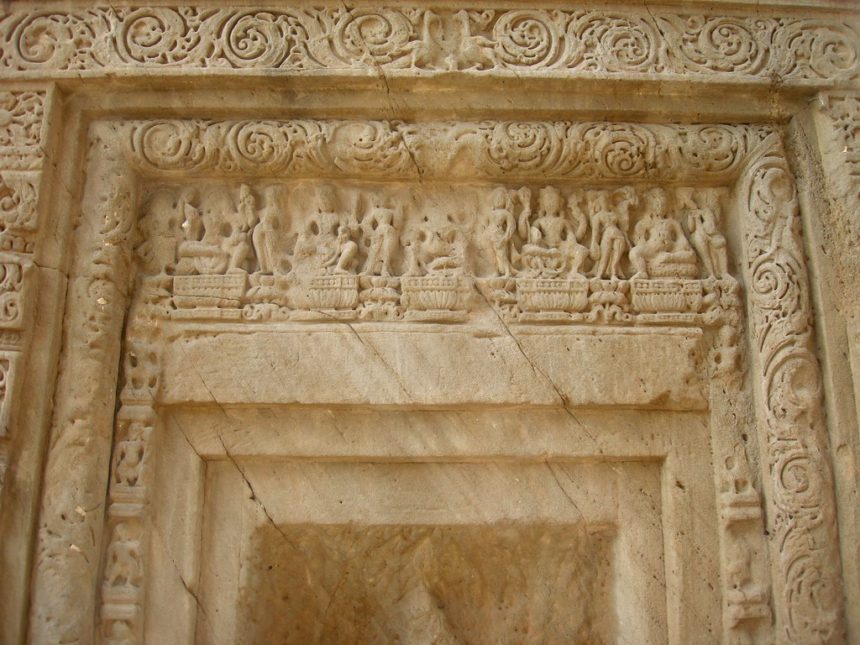
(image: Albert Fernando)
The temple is adorned with detailed carvings of figures and floral patterns. Various Gods and Goddesses are carved on the walls and shikharas of the temple. Shiva and Parvati are shown prominently in various postures. Laksmi and Saraswati are also depicted in carvings.
Intricate carvings and beautifully ornamented sculptures make one wonder at the skills and perseverance of the people who were responsible for cutting these shapes out of the tough sandstone rock without the support of modern technology by their sides.
The magnificent structure built with a cruciform design bears striking similarity with the temple of Angkor Wat in Cambodia and Kailasa Temple at Ellora.

(image: Albert Fernando)
Archaeologists believe that Masrur temple was still being sculpted when Mahmud of Ghazni laid siege to the region in 1009. Known as the ‘conqueror of a thousand temples’, Mahmud plundered the fabled wealth of the Kangra valley, Masrur and all. He destroyed as he went, but Masrur’s saving grace was its construction from bare rock, rendering it virtually indomitable by Mahmud’s army. Although Mahmud did not destroy the temple, it is believed that his untimely arrival prevented the temple’s completion.
Subsequently, natural forces were to leave Masrur destitute at the turn of the 20th century, when in 1905, a strong earthquake devastated the region, toppling Masrur’s stone pillars and ruining the northernmost shikhara. A major portion of the temple is in ruin state with various fragments lying in the vicinity.
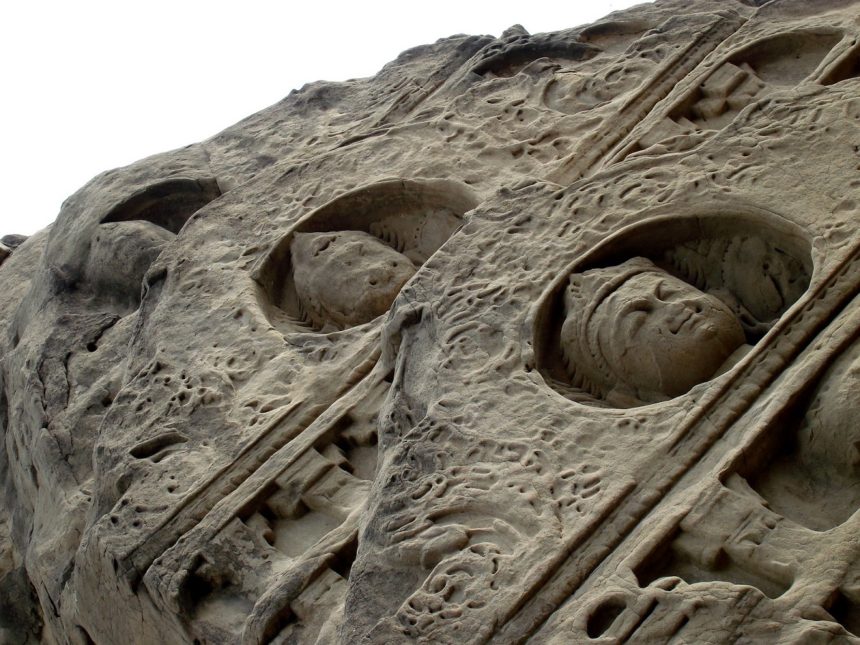
(image: Albert Fernando)
The temple complex is in much dilapidated state despite listed by ASI since 1914.
The Masrur temple is a remarkable specimen of architecture in the country. It is unfortunate that it not widely known among visitors or scholars. The temple complex becomes a history puzzle but also throws new light on the architectural and archaeological knowledge of rock-cut temples in India.
It is important that further in-depth researches are conducted to reveal more about the history, epigraphy, art and architecture of the Masrur temples. Archaeological investigations should be conducted in the surroundings of the temple to ascertain the expanse of the settlement around it.
